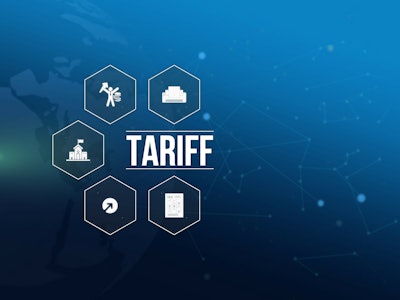
The GEP Global Supply Chain Volatility Index signals the smallest level of spare capacity in global supply chains since June in November, as the index rose to -0.20, from -0.39 previously.
“In November, U.S. manufacturers, particularly in the consumer goods sector, increased their safety stocks to help blunt any immediate tariff increases,” says John Piatek, vice president, GEP. “In contrast, Chinese manufacturers are getting busier as a result of government stimulus and growth in exports, led by automotives and technology products. Strategically, many global companies have a wait-and-hope approach, while simultaneously planning to remake their global supply chains to respond to a tariff and trade war in 2025 and beyond.”
Key Takeaways:
- Driving this increase was Asia, as suppliers to the region reported stretched capacity for the first time since July. This was caused by a surge in procurement activity by manufacturers in the continent, and especially China, as new orders rebounded sharply. This could reflect greater production requirements stemming from domestic stimulus measures, as well as from international clients, who may be stockpiling to mitigate the risk of higher import costs under the Trump administration. Only India reported a greater rise in raw material purchases than China in November. Preparations to ramp up production further were evidenced by our data showing factory procurement activity across Asia rising at its fastest pace for three-and-a-half years.
- Indeed, in North America, reports of safety stockpiling were at their most pronounced since July, highlighting how procurement managers have already implemented changes to their inventory strategies as a result of the incoming US administration’s public commitment to impose significant tariffs. Subsequently, a pickup in activity across North American supply chains resulted in fewer vendors with idle capacity. In fact, our index tracking the region’s supply chain activity hit a four-month high in November.
- Meanwhile, in Europe, suppliers feeding this part of the world saw spare capacity rise further — a contrast to elsewhere — primarily because of the continent’s worsening industrial recession. Factories went deeper into retrenchment mode, according to our data, as demand for inputs from manufacturers here was its weakest since December 2023. Germany continues to be at the forefront of this prolonged and significant slowdown.














![Pros To Know 2026 [color]](https://img.sdcexec.com/mindful/acbm/workspaces/default/uploads/2025/08/prostoknow-2026-color.mduFvhpgMk.png?ar=16%3A9&auto=format%2Ccompress&bg=fff&fill-color=fff&fit=fill&h=135&q=70&w=240)



